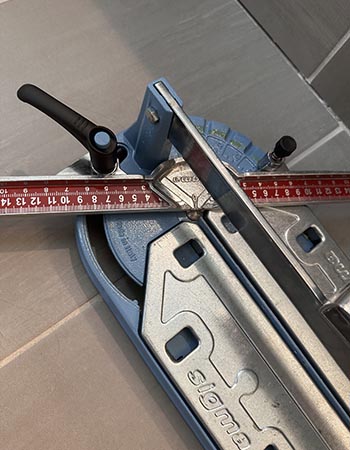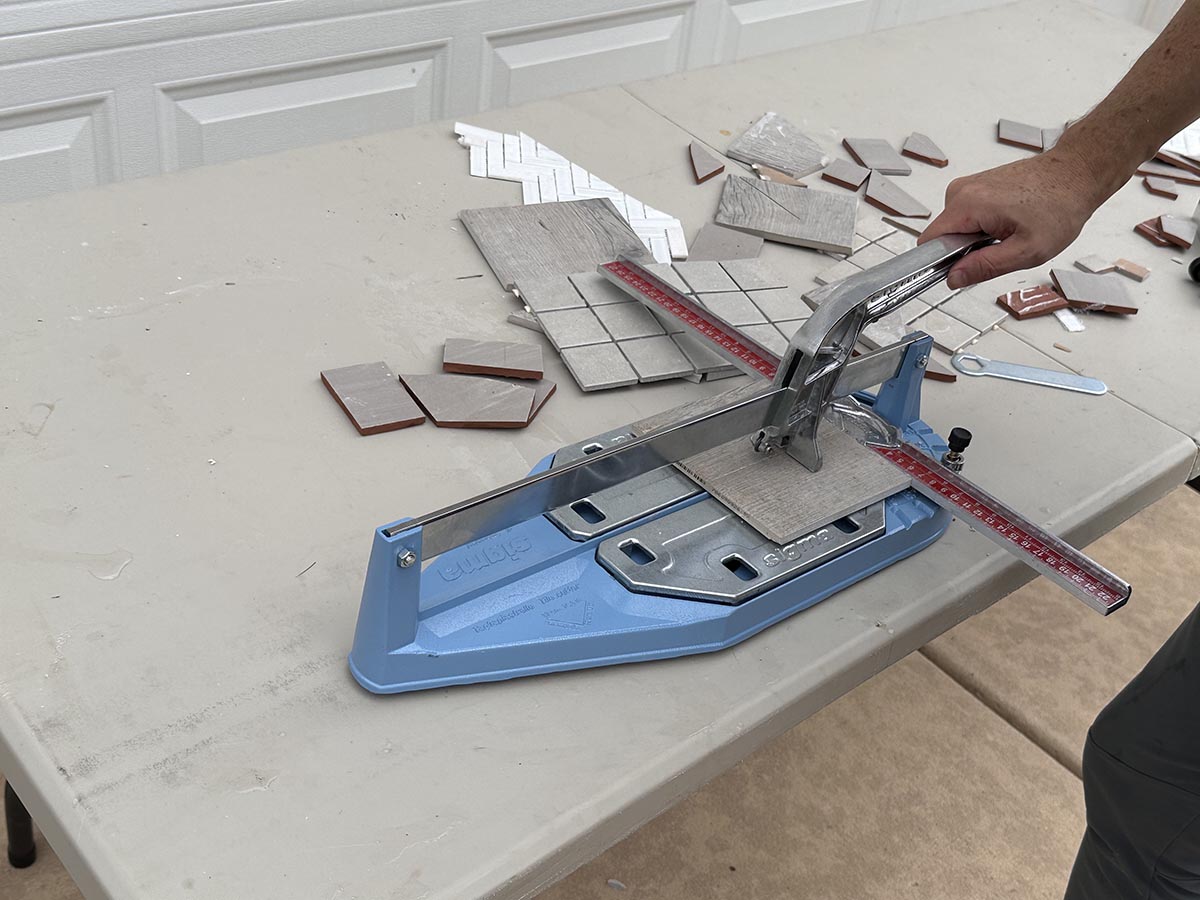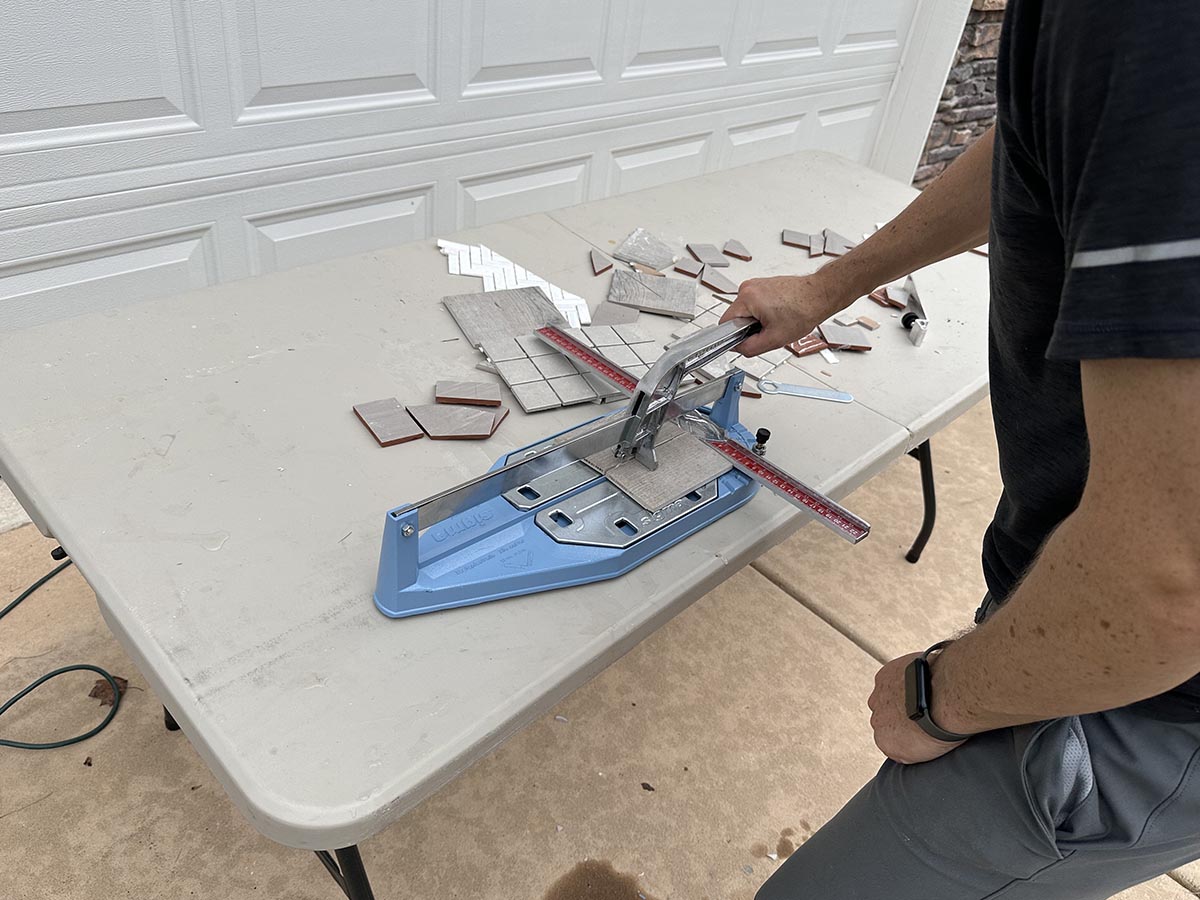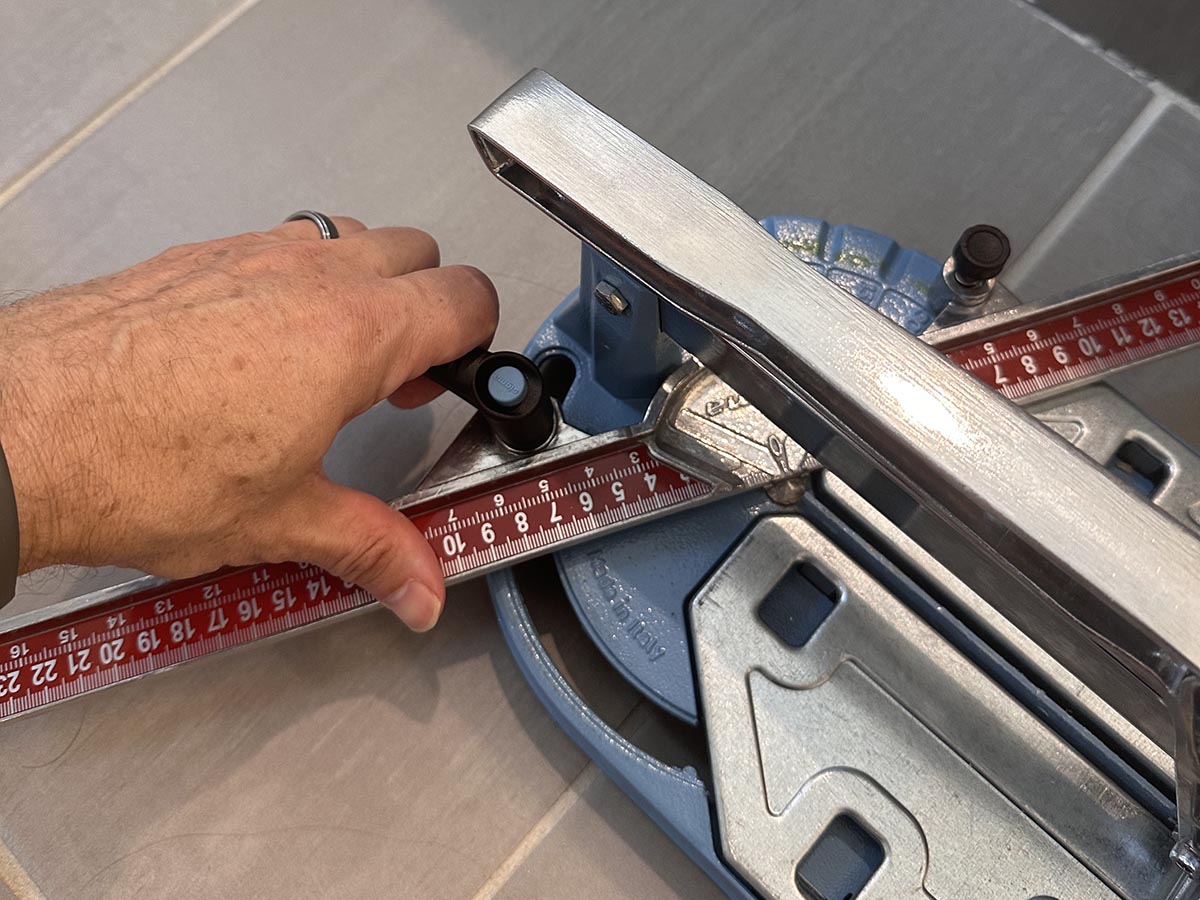We may earn revenue from the products available on this page and participate in affiliate programs. Learn More ›
When it comes to selecting a tile cutter for your next tiling project, you’ll find a lot of devices on the market. Although wet tile saws are an option, they aren’t a practical choice for smaller tiling jobs. Manual tile saws are a better fit for those smaller projects. With that in mind, I set about looking for a manual tile saw that was easy to use and capable of making reliable cuts without damaging the tile.
After subjecting some of the top manual tile cutters to a battery of tests cutting thick porcelain outdoor tile, bathroom tile, and smaller backsplash tiles, I landed on the Sigma 2G as the top model. This manual tile saw from an Italian manufacturer impressed me with its ability to make both clean, straight cuts and miter cuts reliably. Couple that with a compact size that makes it easy to tote to the jobsite, and it’s the perfect manual tile cutter for smaller tiling jobs.
Sigma 2G 37cm Pulling Incision Tile Cutter: At a Glance
Our rating: 4/5
| Sigma Pulling Incision Tile Cutter Specs | |
| Compatible tile materials | Porcelain, glass, ceramic, marble, and granite |
| Type | Manual |
| Pull vs. push | Pull |
| Cutting Size | 14.5 inches (rip cuts), 10.2 inches (diagonal cuts) |
Testing the Sigma Metric Tile Cutter
I put Sigma’s tile cutter to the test in my home, using it to cut four different types of tile, including porcelain, ceramic, and glass tiles. The tile I tested it on ranged from small glass backsplash tiles up to large 24-inch-long by 12-inch-wide bathroom tiles.
After assembling my set of test tiles, I used the Sigma 2G to make several types of cuts, including both straight and angled cuts. For each cut, I considered how easy it was to score the tiles and how much pressure was required to make the cuts. I made multiple cuts on tiles of varying size and type, noting how clean each cut was and whether there was any damage to the tile after the cut.
Along with cutting performance, I also considered how easy the Sigma was to use, noting its stability while applying pressure to make cuts and how easy it was to set up mitered cuts.
| What We Like | What We Don’t Like |
| Makes consistently clean cuts | Bits of tile can jam the spring-loaded trays |
| Compact and lightweight | Only uses metric measurements |
| Adjustable miter fence with multiple stops | Paint wears easily off base |
Cutting Tile With the Sigma 2G

The Sigma tile cutter, like all manual tile cutters, uses the same two-step process of cutting tile. It comes equipped with a scoring wheel that runs along the surface of the tile to create a shallow groove in the surface. You then pull a handle to apply pressure to the tile over the metal spine on the base, snapping the tile along the score line.
The reason the Sigma ranks higher than any other manual tile cutter I tested is due mainly to its reliability. I made more than 20 different cuts with the Sigma on tiles of various types. Whereas other tile cutters I tested would shatter a tile here and there (especially when attempting miter cuts), the Sigma reliably made cut after cut with little to no damage to each tile. This is largely because of its design, which includes spring-loaded panels alongside the raised spine. The panels provide support while scoring the tile, then retract as you apply pressure to the tile with the breaker.
The other area where the Sigma shined was with miter cuts. Most manual tile cutters either have small flimsy miter fences or no fence at all. The Sigma comes equipped with a sturdy 20-inch-long aluminum fence with a miter range of 0 to 45 degrees. The cast-iron base includes seven preset notches that make it easy to set the fence to commonly used miter angles.
This design made it easy to make angled cuts on even larger tiles. My only gripe is that there are no imperial measurements on the Sigma’s miter fence, which means you’ll want a tape measure with metric measurements if you’re taking measurements on a floor or backsplash to make precise cuts.
Sigma Features
Part of the appeal of a manual tile saw is that you can use it indoors. Since wet tile saws produce dangerous silica dust and a lot of water spray, using wet tile saws indoors isn’t advisable.
The Sigma tile saw is well designed for transporting it to where you need it. Since its total weight is under 5 pounds, I had no problem carrying it up flights of stairs or throwing it in the trunk of my car. It’s also compact enough that you won’t mind using it in cramped spaces, such as a small bathroom. This makes it especially ideal for indoor projects on a second floor and other areas where traveling back and forth to make cuts on a wet tile saw just isn’t practical.
Though it’s compact and lightweight, the base doesn’t feel unstable. With its rubber feet and sturdy cast-iron construction, it stayed put while I was applying pressure to the bar to make cuts.

Sigma Performance and Durability
Manual tile cutters are designed to cut through thick ceramic and porcelain tile. They do so by using a scoring wheel to cut a shallow groove in the tile and a metal bar that applies pressure to the tile to break it into two pieces.
This means there’s a fair amount of force applied to a tile cutter with each cut. For this reason, a job that might require dozens or even hundreds of cuts can quickly take a toll on a manual cutter.
With its cast-iron base and a handle and miter gauge made from thicker-gauge cast aluminum, the Sigma has a very sturdy feel to it. I wasn’t impressed with its enamel paint coating, however, which quickly wore off the spine of the iron base that’s used to snap the tile, revealing bare metal. While this wasn’t a huge deal, it does mean it’s crucial to store the tile cutter in a dry place when not in use to prevent rust from forming.
That concern aside, I have little doubt that the Sigma tile cutter would hold up through many tiling projects. While the scoring wheel will eventually wear out, replacing it with a new one is a simple process that involves removing a single screw.

Why I Think the Sigma Tile Cutter Is Worth the Money
As manual tile saws go, the Sigma tile cutter certainly isn’t cheap. At around $255, it costs twice as much or more than other manual tile saws we tested. While that may seem like a huge difference, it’s important to note how well it performs compared to cheaper manual tile saws. Whereas other manual tile saws we tested were very capable tile cutters for straight cuts, they were more prone to shattering tiles, especially when executing miter cuts. Given that tile can cost $15 a square foot or more, it’s not hard to make a case for spending more on the Sigma 2G tile cutter. Still, if you’re only planning to use a tile cutter for a single project, it probably makes better financial sense to go for a more affordable option.
Buy the Sigma tile cutter on Amazon for $253.33.

Product Comparisons
| Sigma 2G 37cm Pulling Incision Tile Cutter | QEP 10630 24-Inch Manual Tile Cutter | Skil 3550-02 7-Inch Wet Tile Saw | QEP 10220Q 20-Inch Pro Tile Cutter | DeWalt D24000S 10-Inch Wet Tile Saw With Stand | |
| Type | Manual | Manual | Electric | Manual | Electric |
| Cutting size | 14.5 inches (rip cuts), 10.2 inches (diagonal cuts) | 24 inches (rip cuts), 16 inches (diagonal cuts) | 7.75 inches (rip cuts, 7.25 inches (diagonal cuts) | 20 inches (rip cuts), 14 inches (diagonal cuts) | 25 inches (rip cuts), 18 inches (diagonal) |
| Price | $253.33 | $126.39 | $148 | $46.62 | $999 |
So, is the Sigma tile saw right for you?
The Sigma tile cutter is the best manual tile saw I tested. With its well-designed cutting mechanism and miter fence, it’s capable of making straight cuts and miter cuts without damaging tile. It’s well constructed with a sturdy cast-iron base and heavy-gauge aluminum parts, yet it is compact and light enough to carry up flights of stairs and use in small spaces. This makes it an ideal choice for small to medium-size indoor tiling projects. That said, if you’re working on a larger tiling project that involves cutting a high volume of tile, you’ll want to go with an electric wet tile saw.
Meet the Tester
Tony Carrick is a freelance writer specializing in home improvement, landscaping, technology, home security, and design. He has conducted rigorous product testing on everything from power tools to home security systems to backyard grills. With each review, his goal is to help readers determine whether a product meets their needs and if it is or isn’t worth its price tag.


